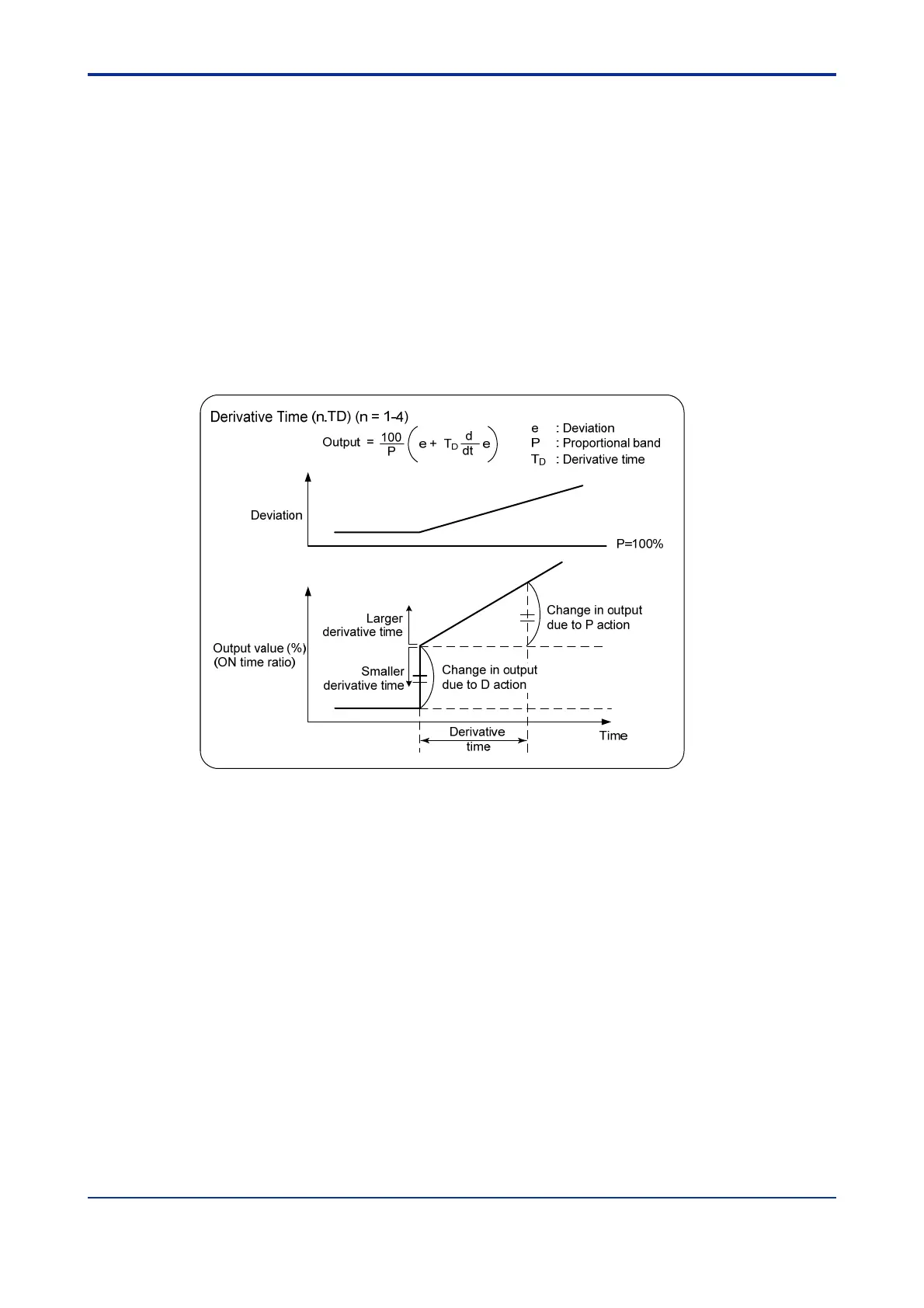C6-6
IM 34M06H62-02E 2nd Edition : June 2008-00
C6.4 Derivative Time
About Derivative Time
If the time constant or lag time of the controlled object is too long, proportional action or
proportional integral action alone may not provide a fast enough corrective operation,
often resulting in overshooting. One way to improve controllability is to take into account
the tendency of the deviation (whether increasing or decreasing) and trigger appropriate
corrective action earlier. The derivative action (D action) changes the output
proportionally to the gradient (rate of change) of the deviation, with the Derivative Time
(TD) parameter defining the sensitivity of the derivative action.
In proportional derivative (PD) action, derivative Time (TD) is defined as the length of
time required for a proportional action alone to produce the same amount of output
change that a derivative action alone would produce given a deviation with a specific
gradient.
Figure C6.7 Derivative Time

